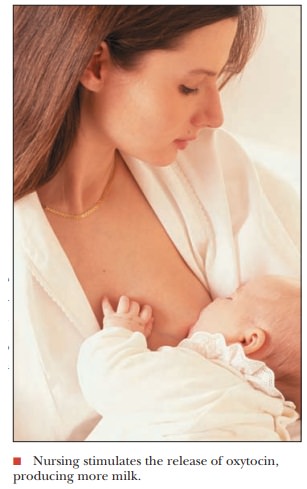Chapter: Biochemistry: Amino Acids and Peptides
Peptide Hormones-More Small Molecules with Big Effects
Peptide Hormones-More Small
Molecules with Big Effects
Both
oxytocin and vasopressin are peptide hormones. Oxytocin induces labor in
pregnant women and controls contraction of uterine muscle. During pregnancy,
the number of receptors for oxytocin in the uterine wall increases. At term,
the number of receptors for oxytocin is great enough to cause contraction of
the smooth muscle of the uterus in the presence of small amounts of oxytocin
produced by the body toward the end of pregnancy. The fetus moves toward the
cervix of the uterus because of the strength and frequency of the uterine
contractions. The cervix stretches, sending nerve impulses to the hypothalamus.
When the impulses reach this part of the brain, positive feedback leads to the
release of still more oxytocin by the posterior pituitary gland. The presence
of more oxytocin leads to stronger contractions of the uterus so that the fetus
is forced through the cervix and the baby is born. Oxytocin also plays a role
in stimulating the flow of milk in a nursing mother. The process of suckling
sends nerve signals to the hypothalamus of the mother’s brain. Oxytocin is
released and carried by the blood to the mammary glands. The presence of
oxytocin causes the smooth muscle in the mammary glands to contract, forcing
out the milk that is in them. As suckling continues, more hormone is released,
producing still more milk.
Vasopressin
plays a role in the control of blood pressure by regulating contraction of
smooth muscle. Like oxytocin, vasopres-sin is released by the action of the
hypothalamus on the posterior pituitary and is transported by the blood to
specific receptors. Vasopressin stimulates reabsorption of water by the kidney,
thus having an antidiuretic effect. More water is retained, and the blood
pressure increases.

Related Topics